Explore images and items from our Shoppers' World Collection using maps of the iconic mall as it was when it opened in 1951!
LOWER LEVEL
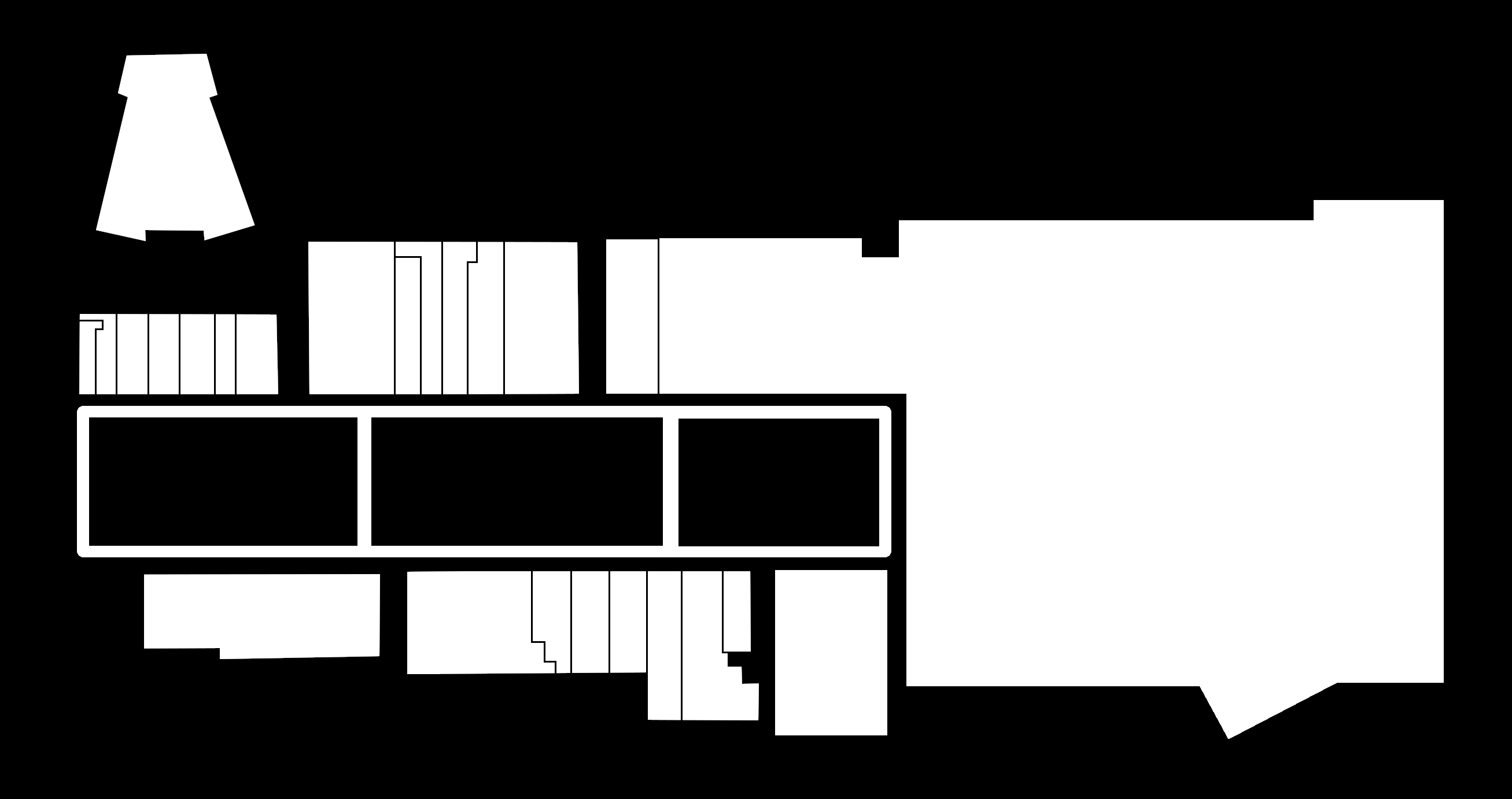
Jordan Marsh Company
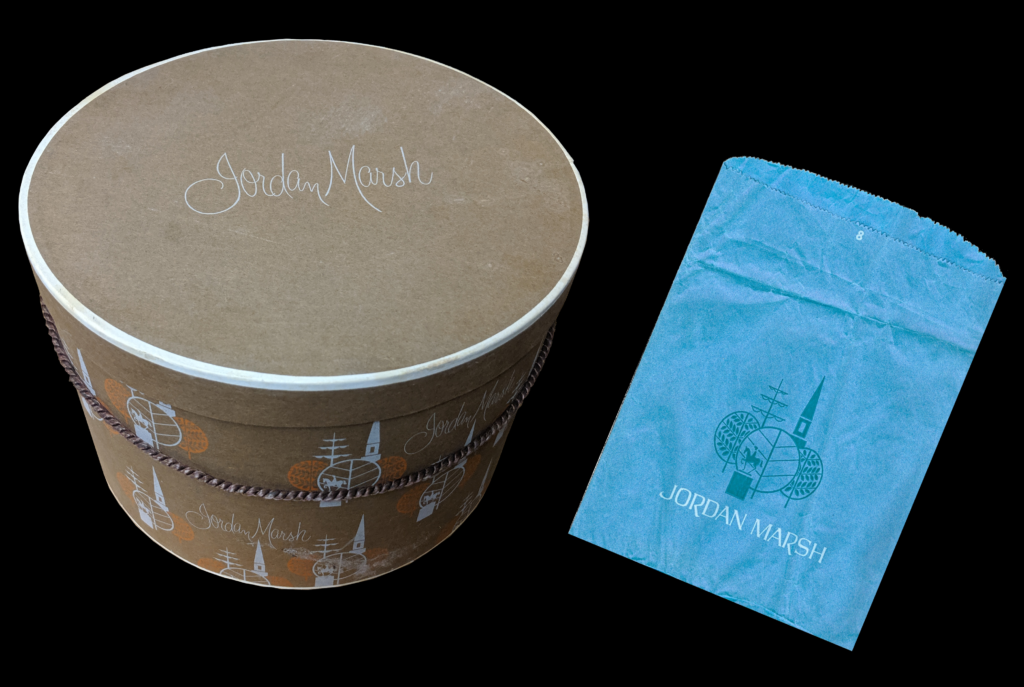
Key to the success of this new kind of shopping center was the concept of “anchor stores,” a feature that is now
a standard in American shopping malls. Jordan Marsh, as a forward-thinking, Boston-based business, was a natural fit to be one of the first mall anchor stores in the country. Hat and bag from Jordan Marsh. From the Framingham History Center Collection.
Sharaf's Restaurant
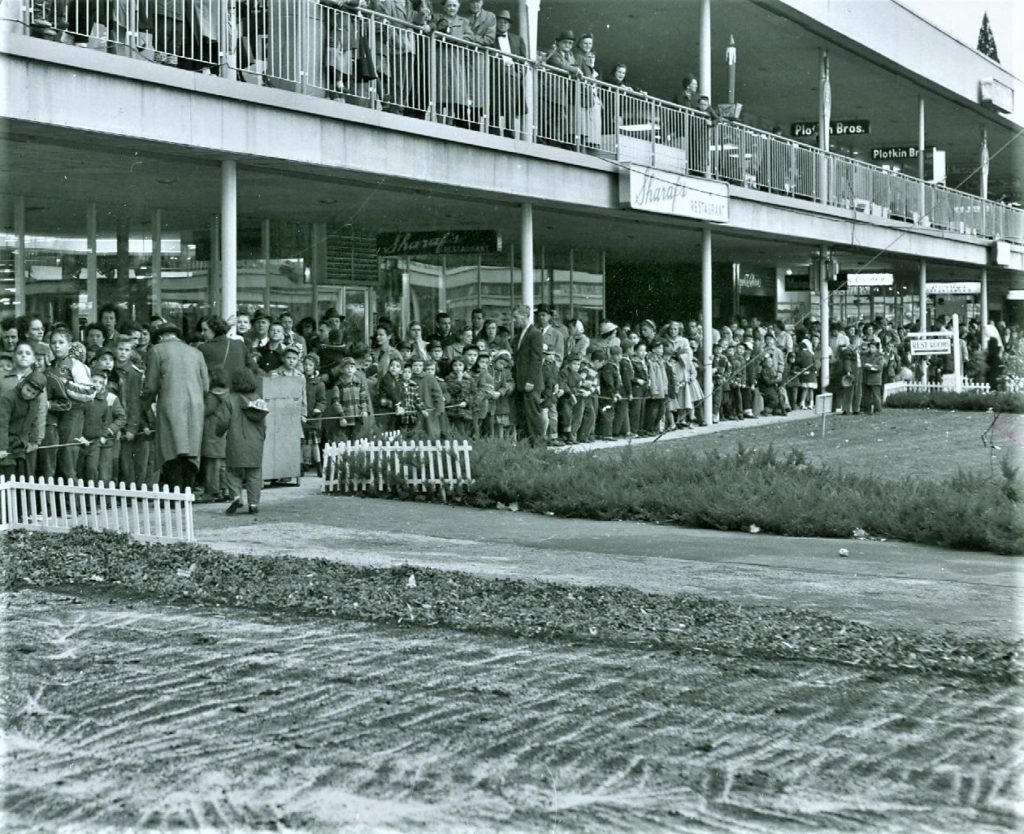
Sharaf's Restaurant, which could seat up to 800 diners, is seen here on opening day of Shoppers' World in 1951.
Van's Hosiery
Despite the presence of multiple department stores in the Shoppers' World complex, specialty shops like Van's Hosiery were able to thrive in this new model of shopping.
C & T Paint and Wallpaper Co.
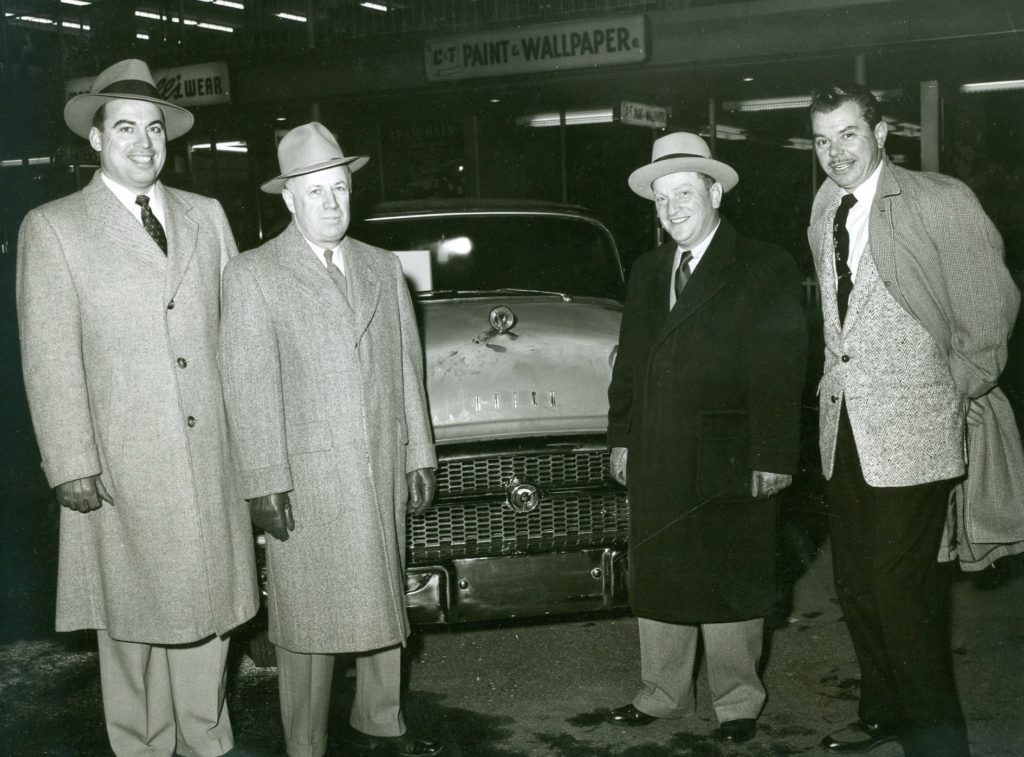
Four men stand with a Buick outside C & T Paint and Wallpaper, ca. 1955.
Modell's Menswear
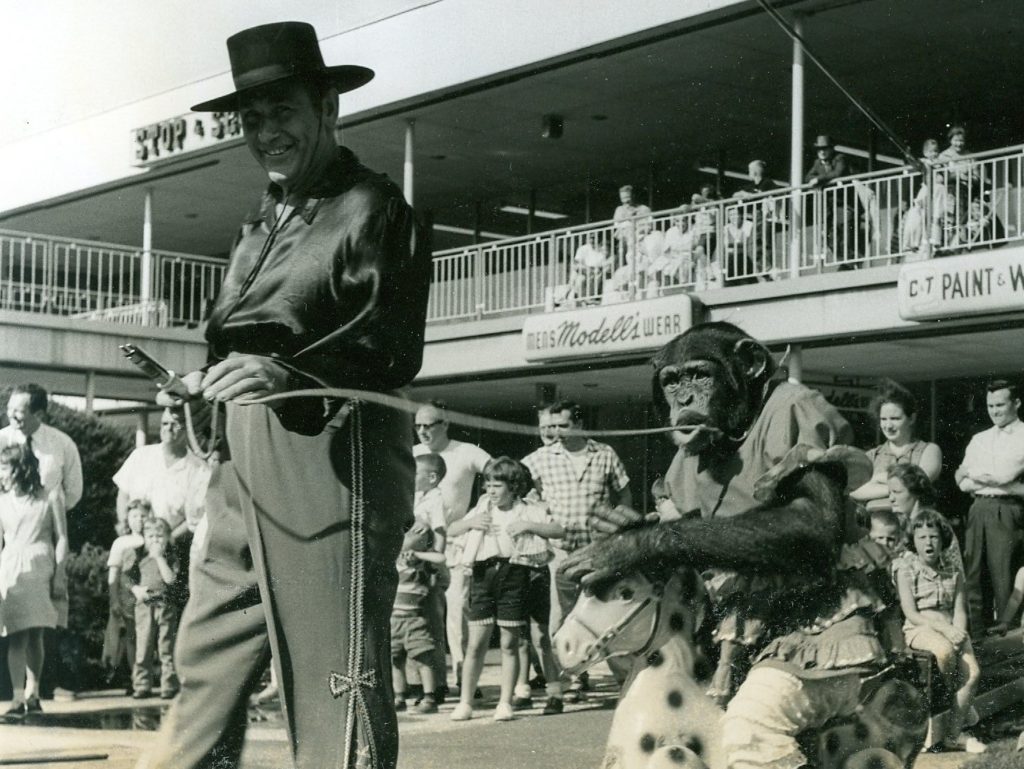
A trained chimpanzee and its handler performing in the courtyard outside Modell's.
Gorin's Department Store

A Dalmatian show held in the courtyard outside Gorin’s Department store in the 1960s.
Lepie's Inc.

Lepies was one of many home furnishing stores selling items like draperies and yardgoods. Here a lion tamer is seen performing in the courtyard outside the store.
Spencer Shoes
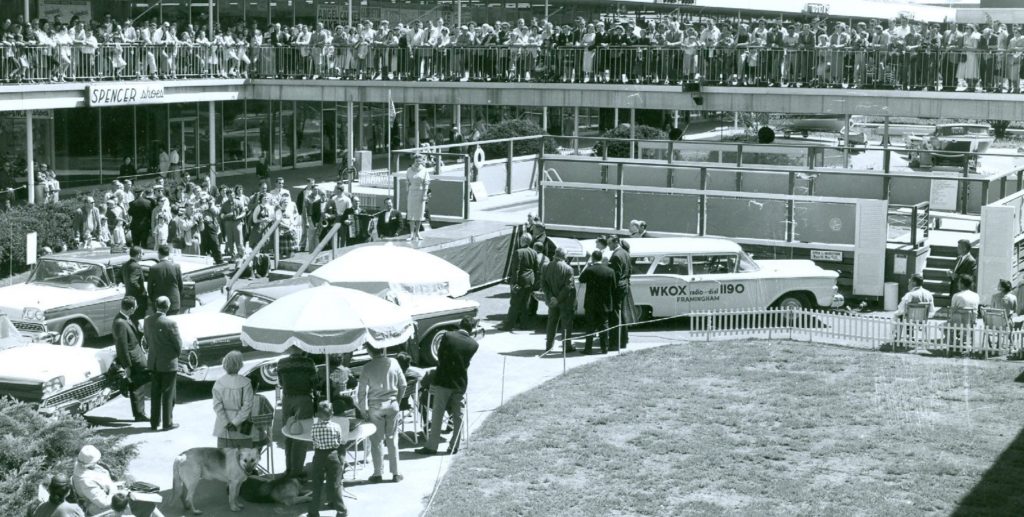
Crowds gathered in the courtyard around a swimming pool outside Spencer Shoes.
House of Kenney
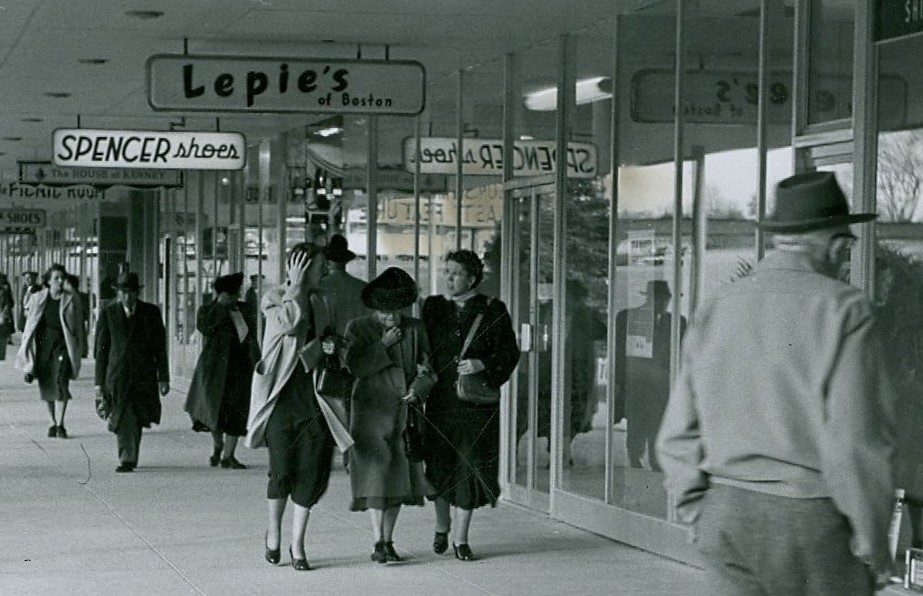
Looking down the walkways of Shopper's World towards The House of Kenney, one of the many home goods and interior decoration stores in the shopping center, ca. 1960.
Talcoff's Shoes

A man vacuums the interior of Talcoff's Shoe store in the wake of a water main break in the 1970s.
Idea Box Gifts and Cards
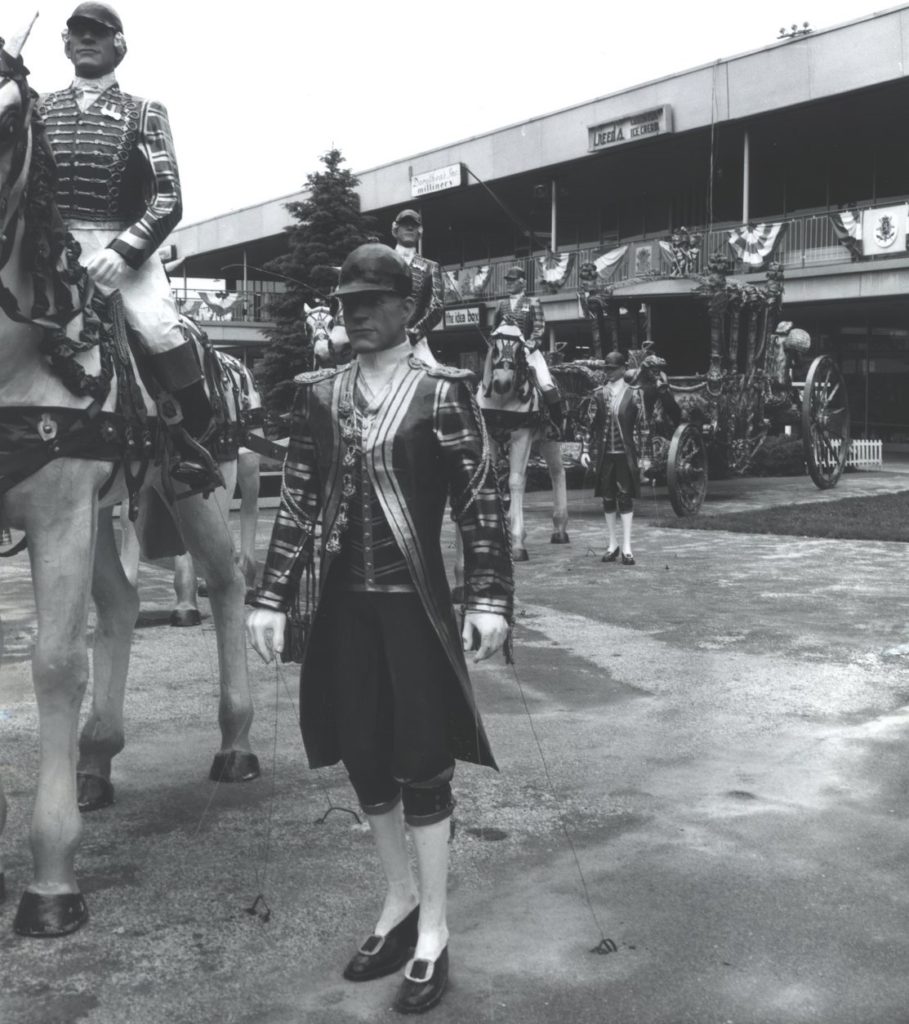
A diorama of men in livery and a horse-drawn carriage in the courtyard at Shoppers' World. Idea Box Gifts can be seen in the far back.
Berny's Linen Shop
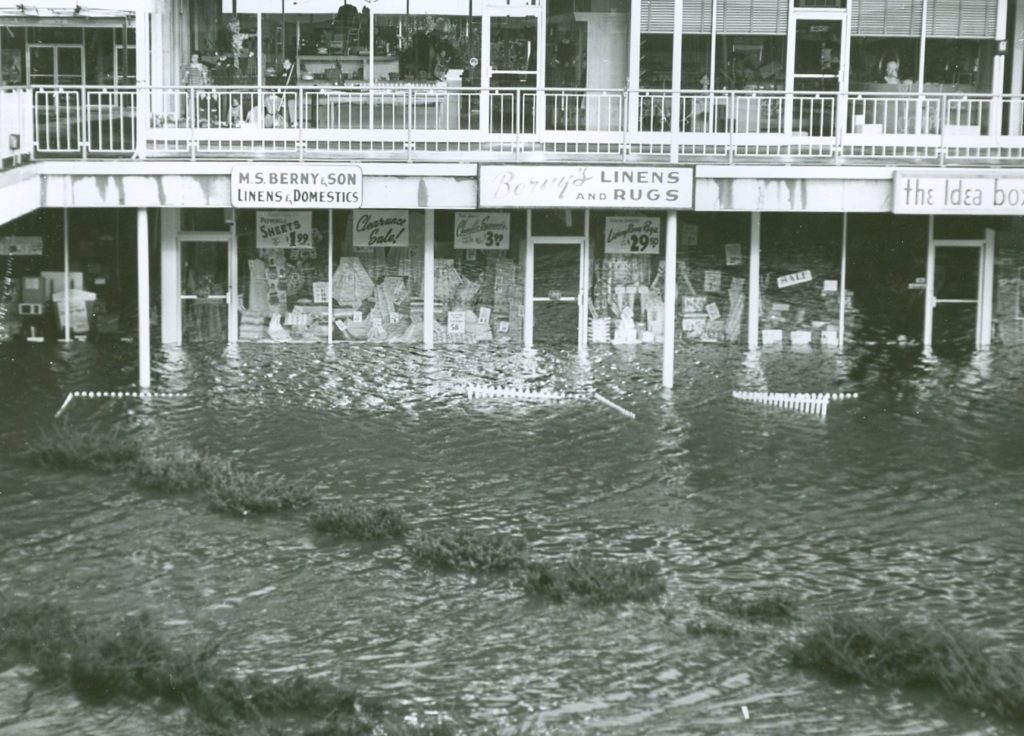
Berny's Linen in September 1954, after flooding from Hurricane Edna.
WKOX Radio Station
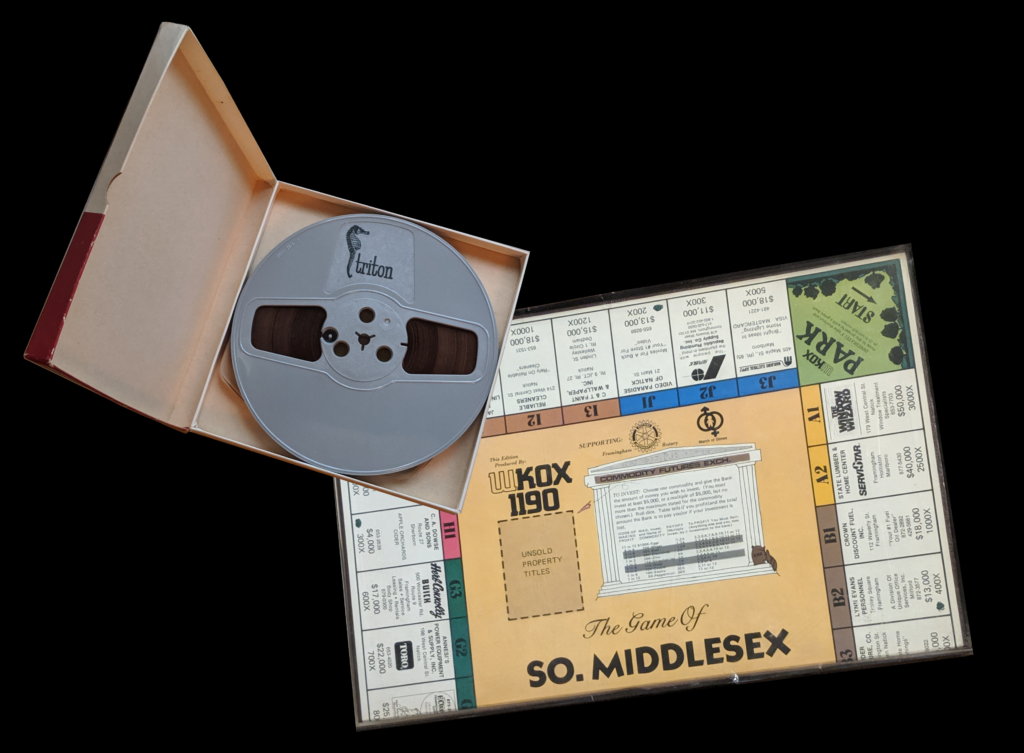
In addition to the standard retail fare, Shoppers’ World was also home to a studio for WKOX, Framingham’s local daytime radio station. Shown here are a reel of tape from WKOX and The Game of South Middlesex, produced by WKOX to support the March of Dimes. From the Framingham History Center Collection.
The Album Records
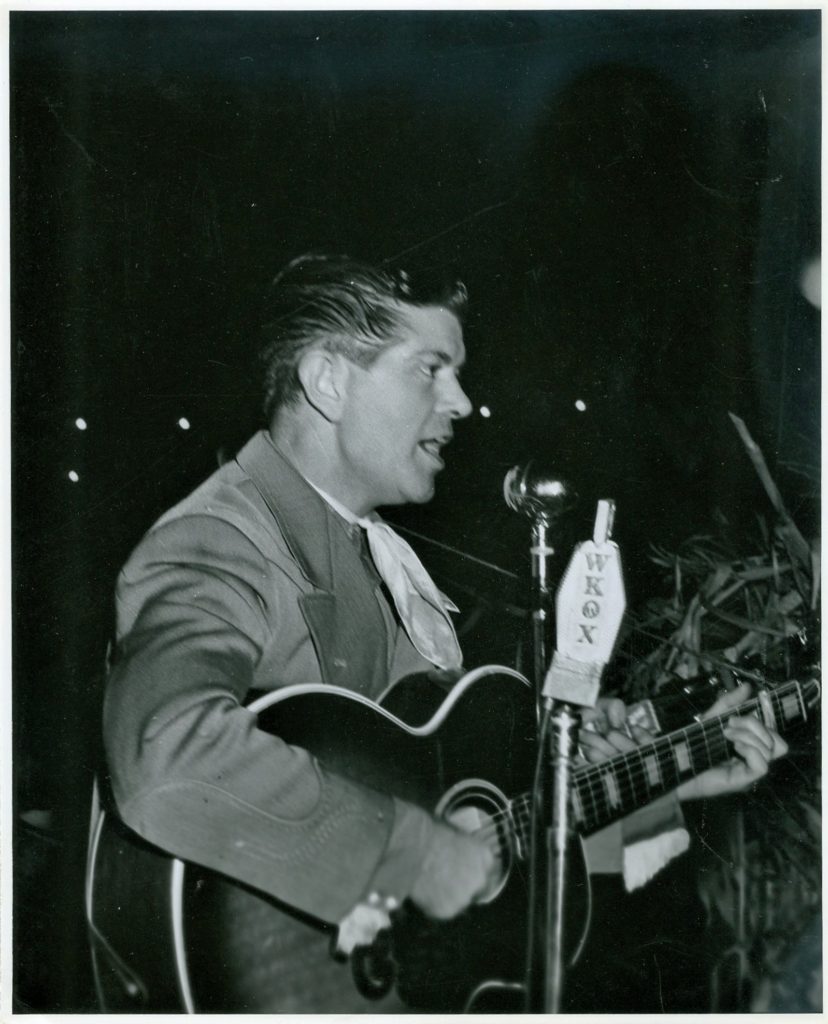
A trip to Shoppers’ World was often a musical experience, and not just because there was a record store! Concerts were a regular feature of the entertainment offered both in the Cinema and on the Courtyard.
Fitts Photo Shop
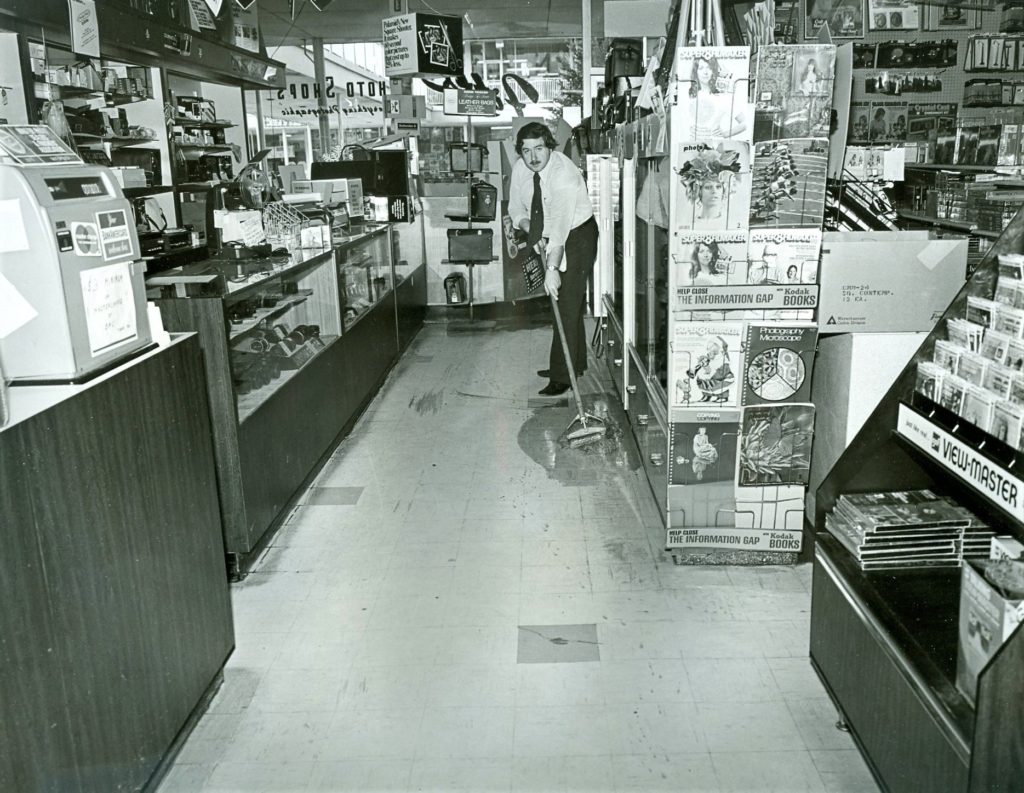
An employee at Fitts Photo Shop mops in the wake of a water main break in the 1970s.
Femina Beauty Shop
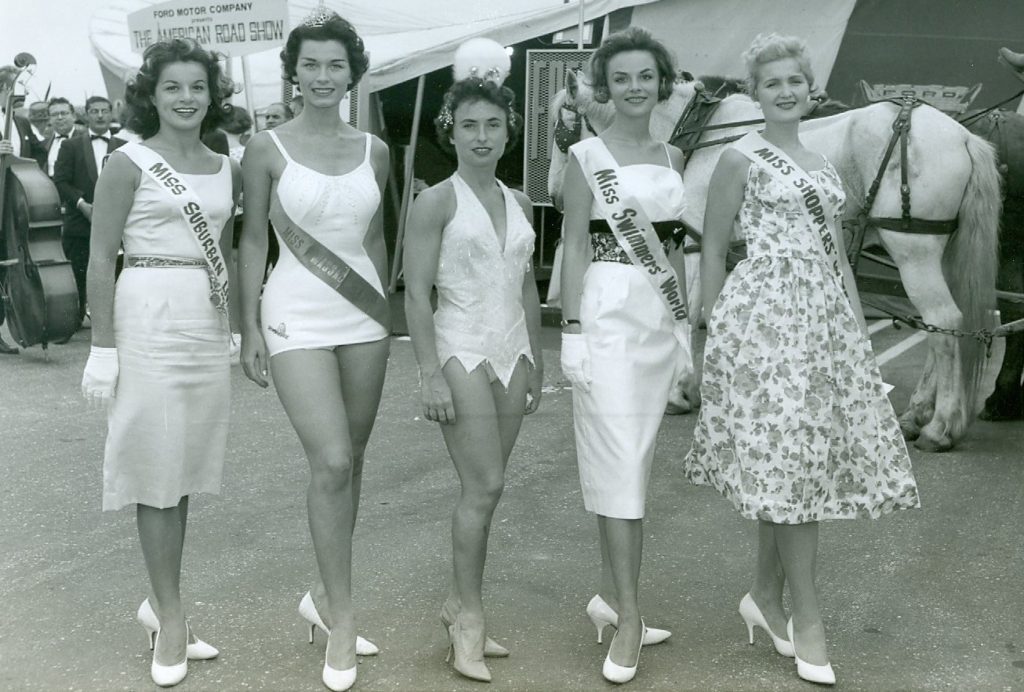
Shoppers' World's key demographic was young women and stay-at-home mothers, so the inclusion of a beauty shop in the mall was considered a natural fit. In general, the Shoppers' World of the 1950s and 60s was a proponent of mainstream femininity, as can be seen in this image of Beauty Queens, including "Miss Shoppers' World", ca. 1960.
The Cinema

Like everything at Shoppers’ World, the Cinema was revolutionary. It was a brand new concept to pair a shopping center with a movie theater, and the Framingham theater was the first American commercial venture to bear the name “Cinema.”
Courtyard
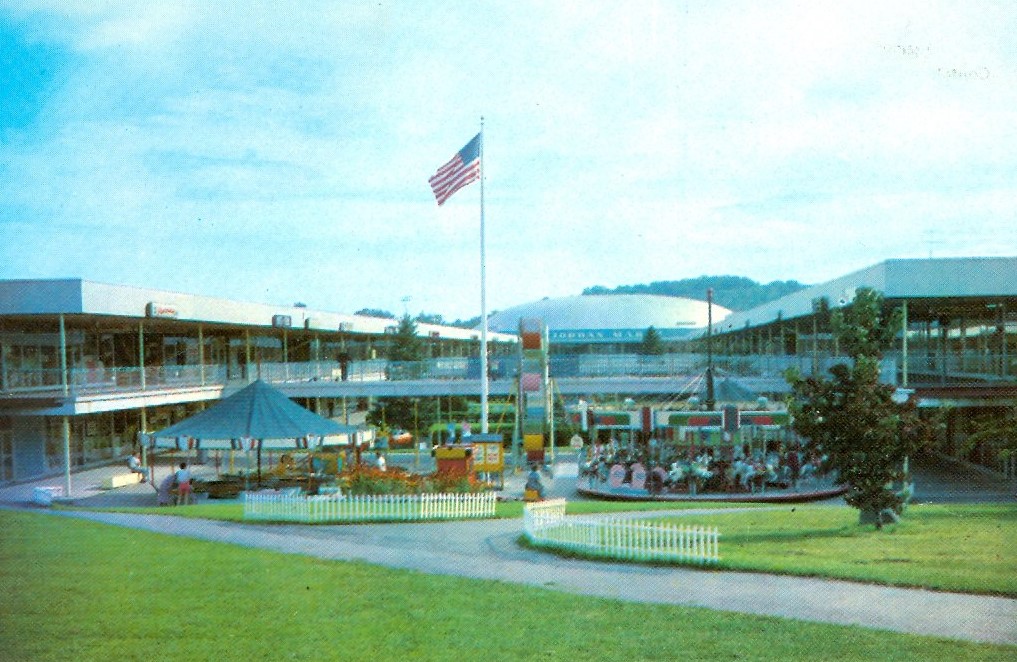
The courtyard at Shoppers' World was just as important as the businesses that surrounded it. It was a space for visitors to congregate and was host to most of the shopping center’s special events. It was the courtyard, with its award-winning landscape design, that truly gave Shoppers’ World its unrivaled sense of place.
Duncan McAndrew, Tailor
Duncan McAndrew operated the only independent Tailor's shop in Shoppers' World. After visiting the shopping center's many clothing retailers, shoppers could drop off new purchases for alterations during the same visit.
The Candy Cupboard

There was lots for children to love at Shoppers' World! Kids loved coming back to enjoy all the center had to offer them, from candy shops to special events like the Easter Egg Hunt depicted here.
Beverly's Inc.
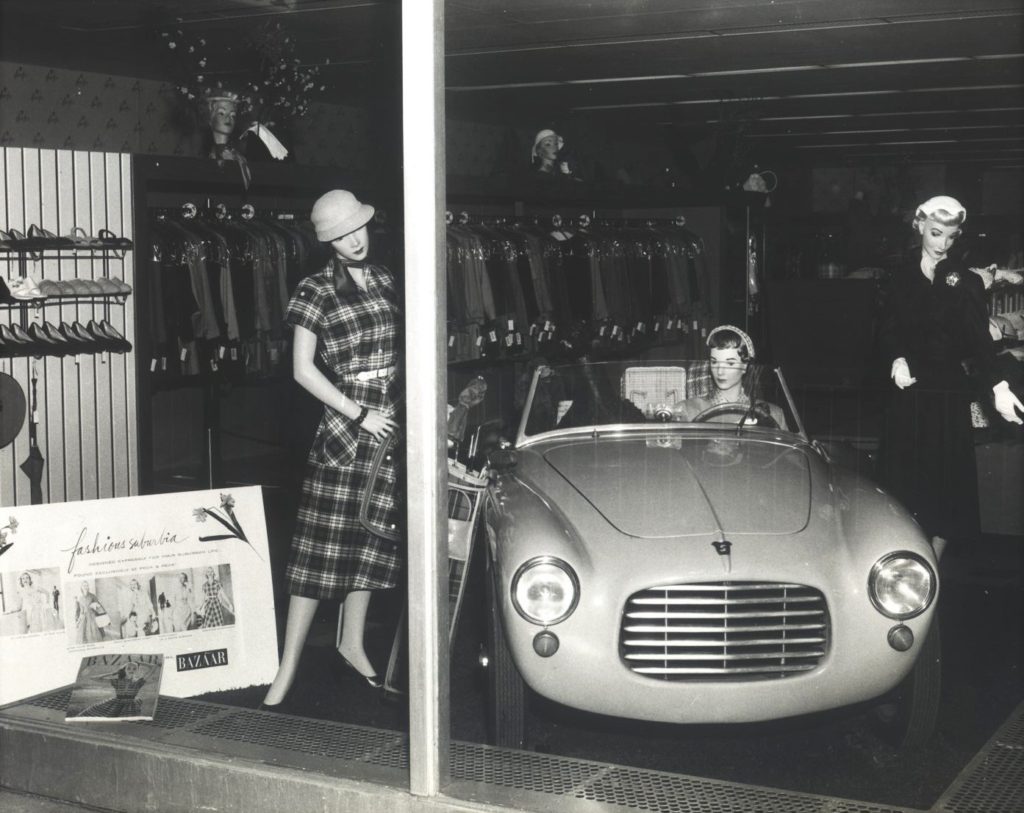
Beverly's sold "Misses' and girls' sportswear." Seen here is the window display of an unidentified women's wear shop.
Pierre Marcel Coiffures
Shoppers' World opened with two salons in 1951, Peirre Marcel Coiffures and Femina Beauty Shop. The mall would continue to house a series of hair salons, nail salons, and eventually a barber shop throughout its operation.
Tic-Toc Donut Shop
There was no shortage of treats to be had at Shoppers’ World, including the donuts at Tic-Toc Donut Shop. Later Shoppers’ World eateries, such as Joan and Ed’s Deli and the bakery at Jordan Marsh (and their famous blueberry muffins!) would gain iconic status.
Framingham Trust Company
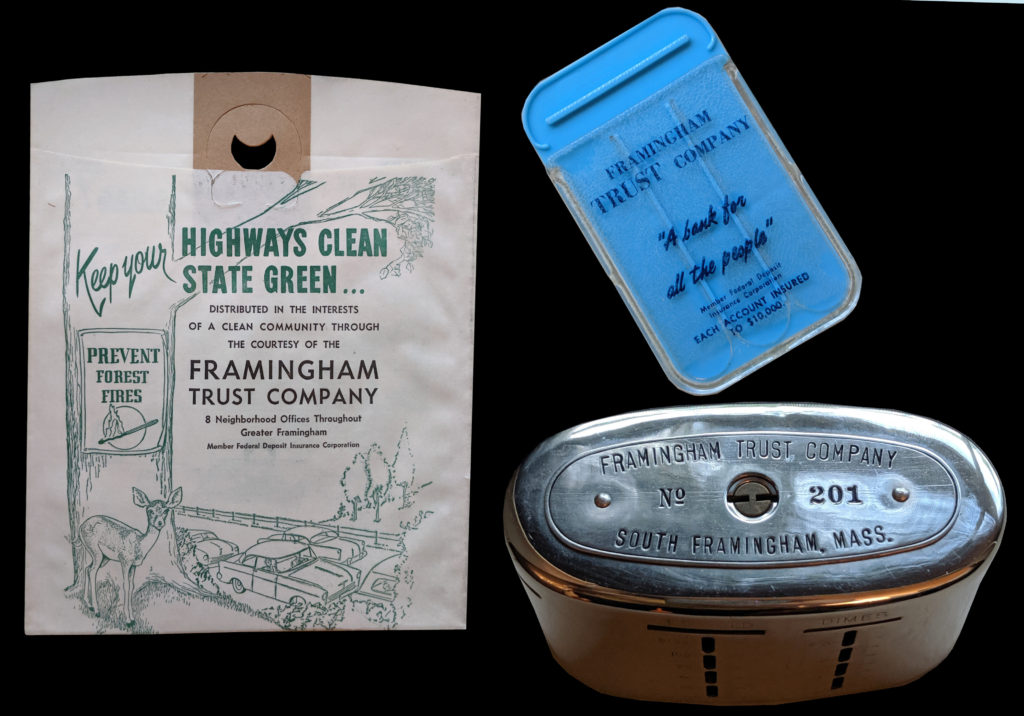
The developers of Shoppers’ World wanted to offer an unprecedented level of convenience, allowing their customers to shop, eat, and even bank while visiting the mall. Seen here are promotional products from the Framingham Trust Company, which had locations all over town, including at Shoppers' World. From the Framingham History Center Collection.
Sears Roebuck & Co.
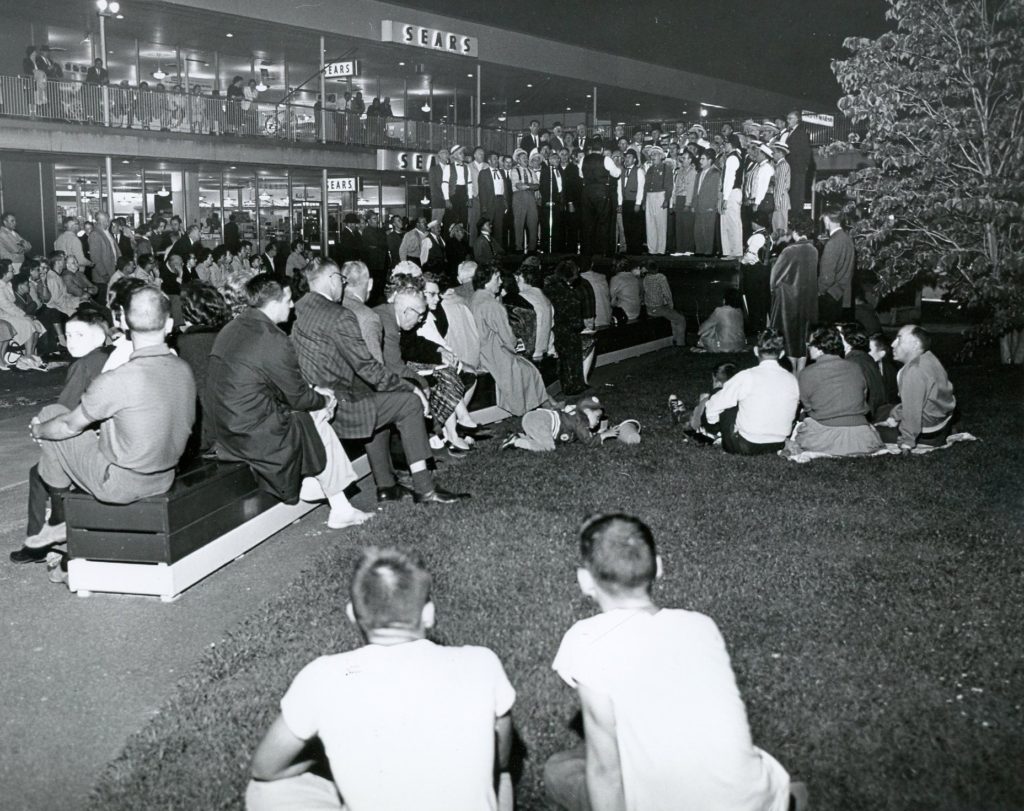
“The Barbershoppers” perform in the courtyard outside Sears at Shopper’s World, 1963.
Jordan Marsh Company Furniture

Although it wasn’t up and running for opening day, Jordan Marsh’s furniture department was slated to fill its own building soon after Shoppers’ World went began operations. Seen here are a business card and booklet from the Jordan Marsh furniture department, 1980s. From the Framingham History Center Collection.
UPPER LEVEL

The Cinema
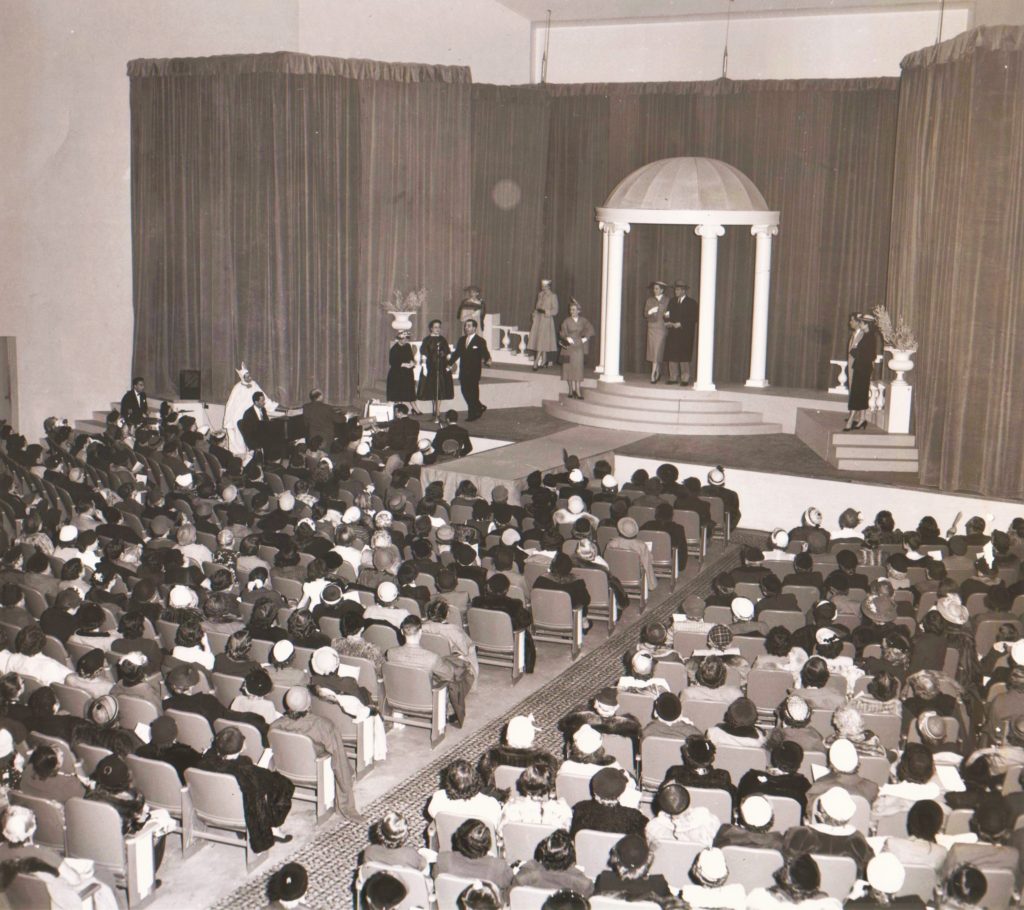
The Cinema’s auditorium sat over 1,400 people for more than just movies! Live theater, concerts, and events like this 1953 fashion show graced its stage.
The Pharmacy
The Pharmacy at Shoppers’ World was the first self-service drug store (for over-the-counter products) in New England.
Tots 'N Teens Children's Store

Shoppers outside Tots 'N Teens ca. 1950s
Dorothea's Millinery
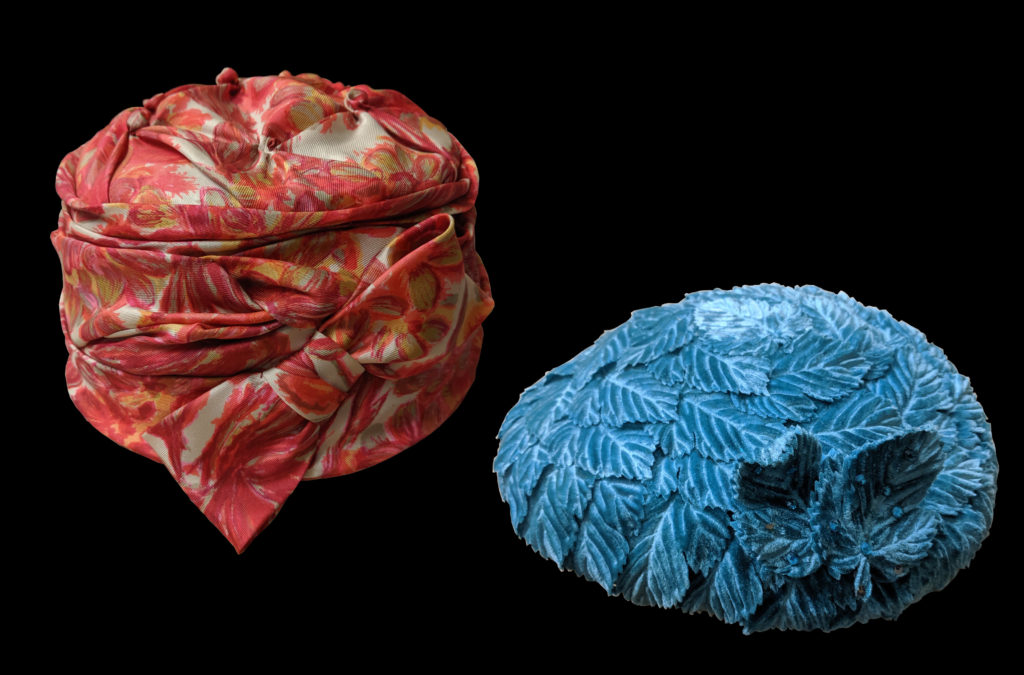
Hats from Dorothea's Millinery, ca. 1955. From the Framingham History Center Collection.
Creed's Ice Cream and Fine Candies
The biggest target audience for Shoppers’ World was the stay-at-home mother who often brought her children shopping out of necessity. Confectionaries like Creed’s and other children’s programming were key to appeal to Shoppers’ World’s youngest demographic.
G. A. Sawyer & Co. Menswear
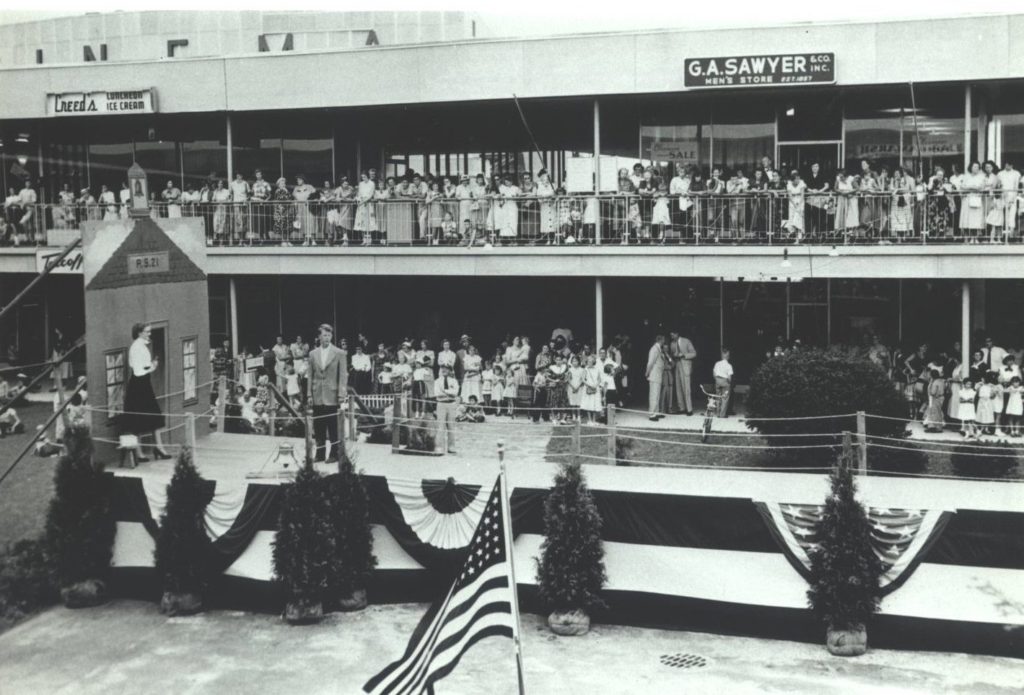
Crowds gather outside G. A. Sawyer & Co. to watch a staged event in the courtyard ca. 1960.
Maternity Shop

The Easter Bunny and a clown address a crowd of shoppers in the courtyard, with the Maternity shop in the background, ca. 1965.
Brockelman Bros. Supermarket
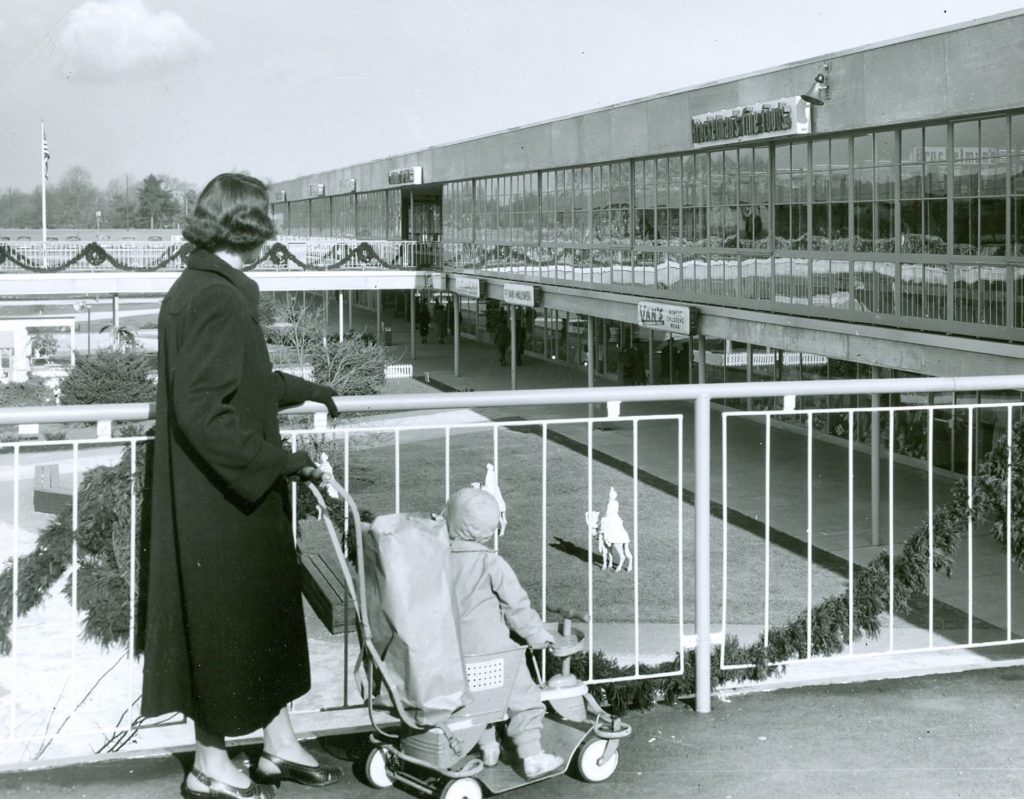
Glass corridors were later erected along the exterior walkways to stave off the cold, as can be seen in this image of a mother and child overlooking Brockelman Bros. Supermarket ca. 1960.
Gorin's Department Store

Gorin’s Department Store after flooding from Hurricane Edna in September of 1954.
Peck & Peck Women's Wear
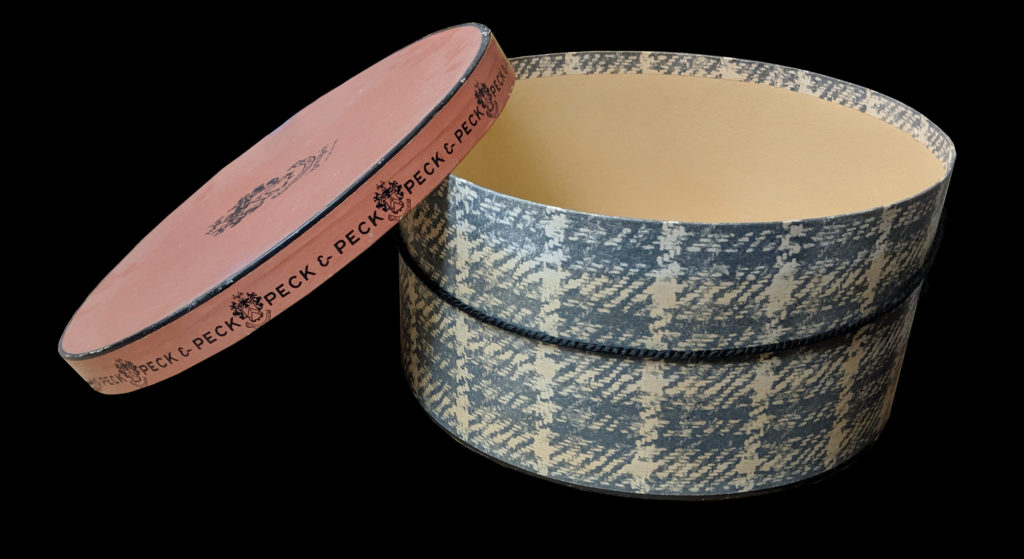
A hat box from Peck & Peck Women’s Wear, ca. 1960s. From the Framingham History Center Collection.
J. M. Lord's Modern-Age
J.M. Lord's was billed as a seller of "modern furniture and accessories," but did not make it very far into the "modern age," shuttering by 1953.
The Dome at Jordan Marsh
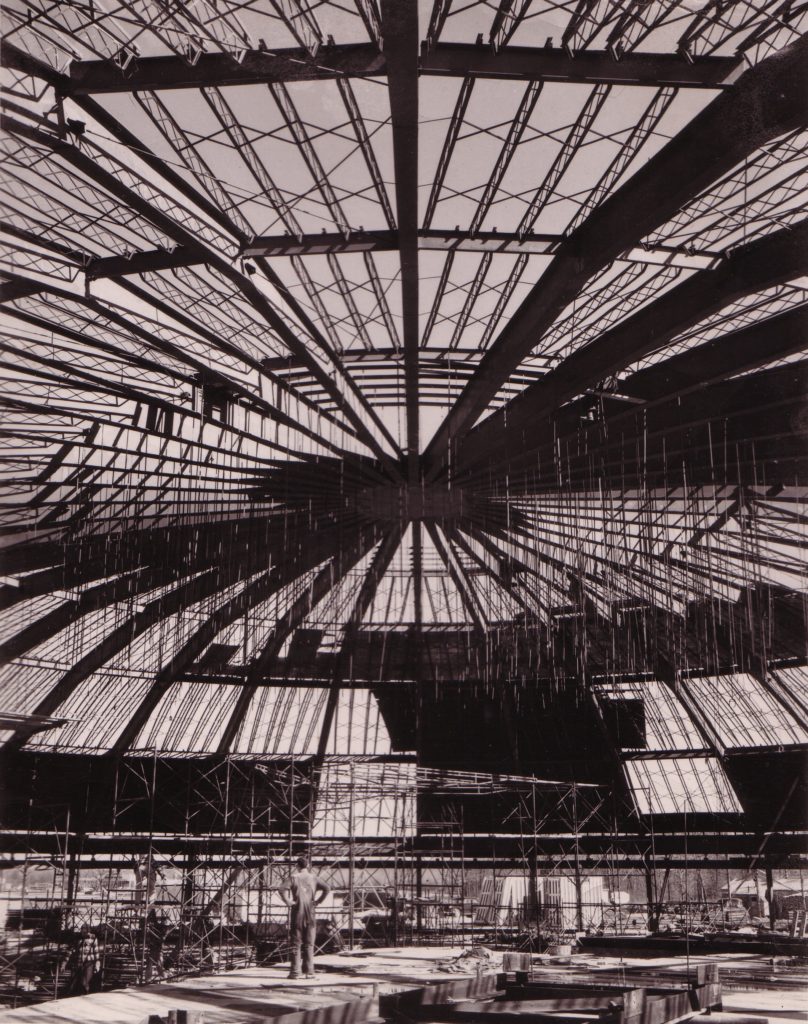
The Dome at Jordan Marsh was the largest unsupported dome in the country, and the largest arched beam construction in the world. It is seen here under construction ca. 1950.
Kennedy's

Billed as "men's, women's and boys' apparel", Kennedy's dominated the western side of Jordan Marsh and had one of the longest tenures as Shoppers' World at 28 years.
Plotkin Bros. Women's Wear
One of the Shoppers' World Seven Secrets to Success was founded on fostering competition between stores to allow for price comparison and by far the most represented type of retailer was the women's wear shop. Not counting the 3 department stores, Shoppers' World had 8 shops that sold women's wear.
Brett's Leathergoods

Painter talking with a woman sitting on luggage outside of Brett's Leathergoods, purveyors of luggage and gifts, at Shoppers World. ca. 1960.
Country Flair Sportswear
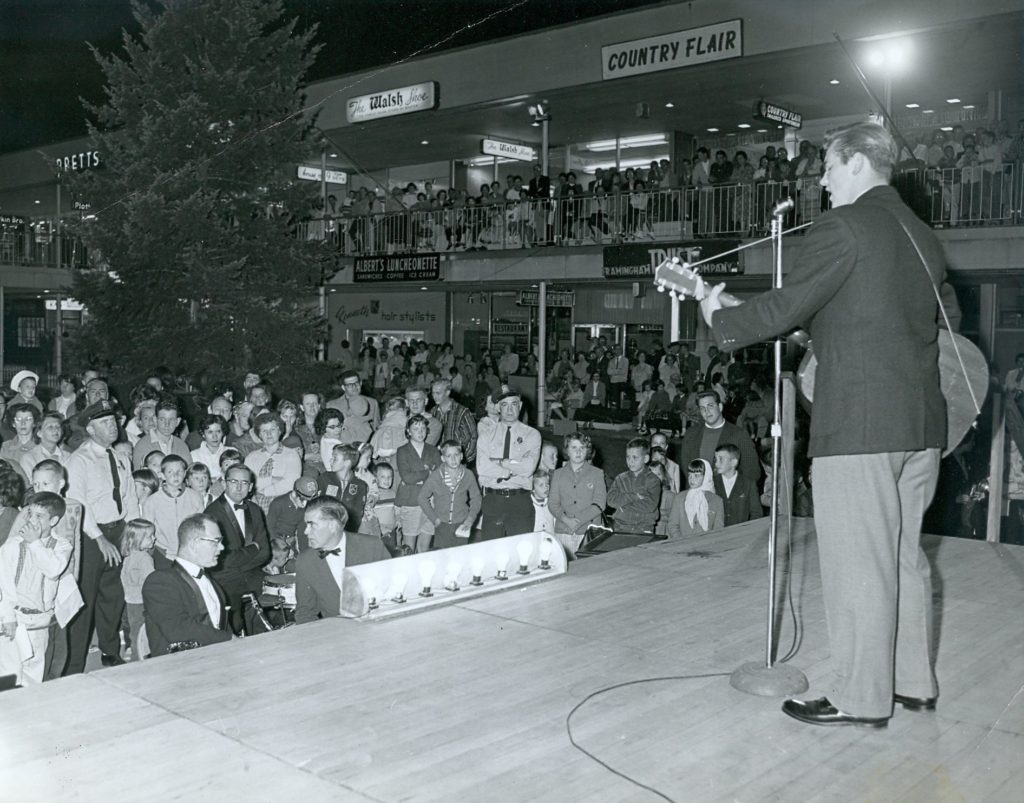
A musician performs in the courtyard, ca. 1953. Country Flair Sportswear can be seen in the upper right.
MacDonnell's Women's Wear
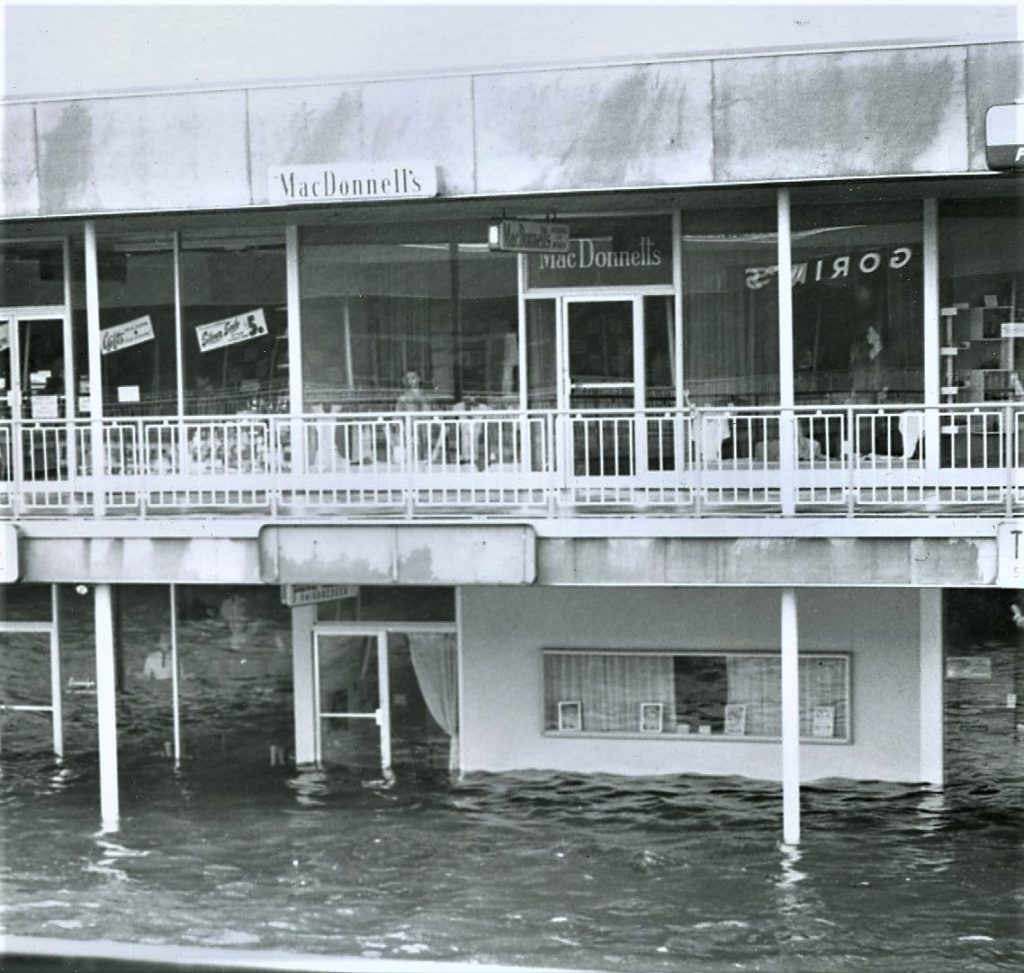
MacDonnell's Women's Wear above the flooding following Hurricane Edna in 1954.
Sears Roebuck & Co.
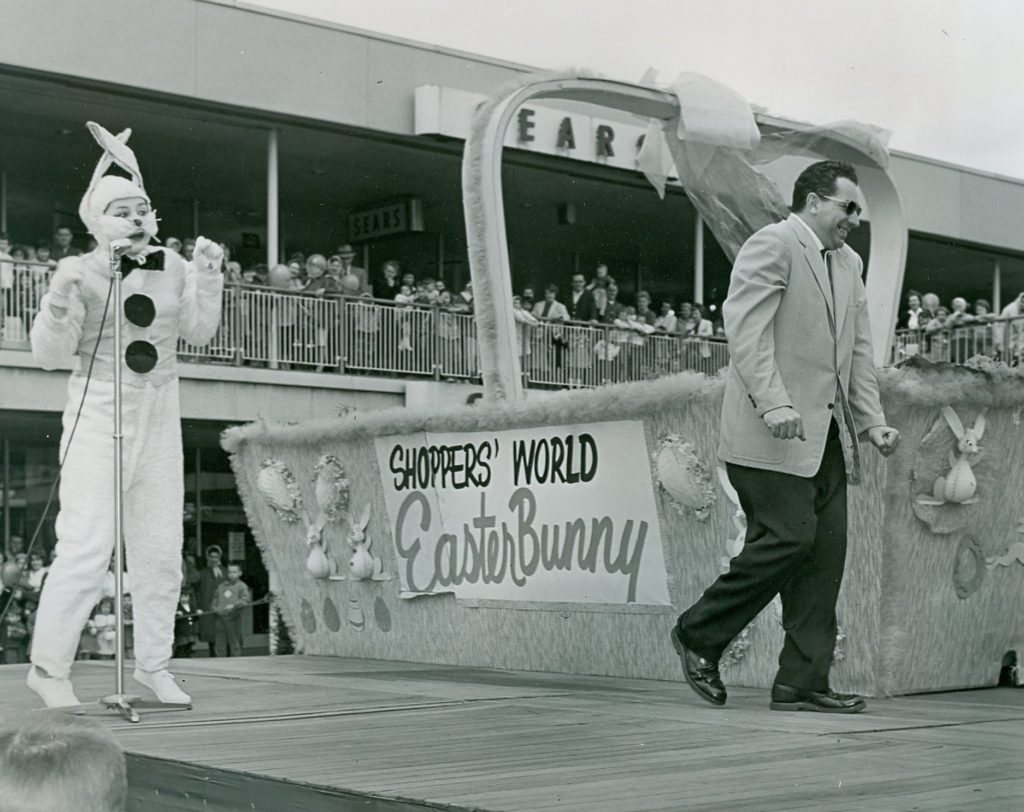
The Easter Bunny appears in the courtyard outside Sears, ca. 1960.
Jordan Marsh Company Furniture
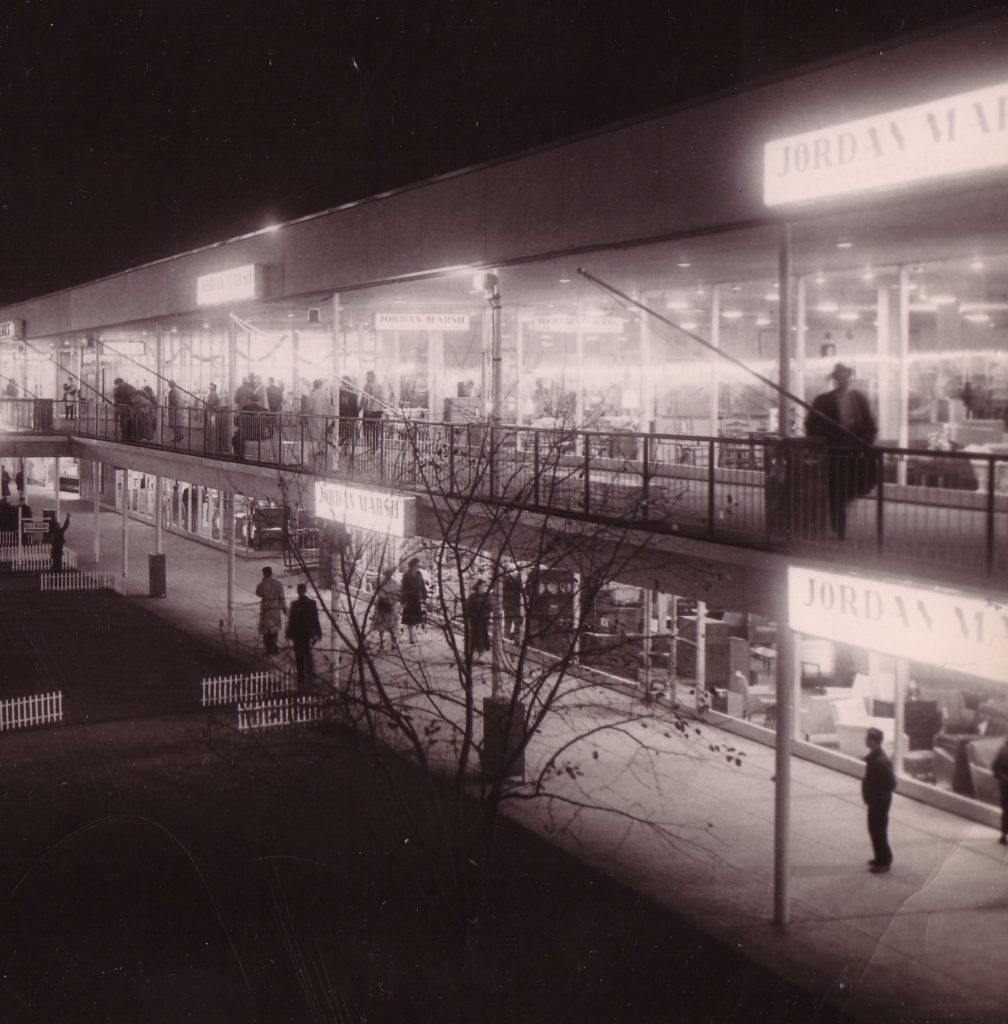
Groundbreaking for 1951, Shoppers' World was open three evenings a week until 9 p.m. Here Jordan Marsh Company furniture can be see lit up at night, 1960s.
Kerwin's Shoe Store

A promotional shoehorn from Kerwin's Shoe Store. From the Framingham History Center Collections.